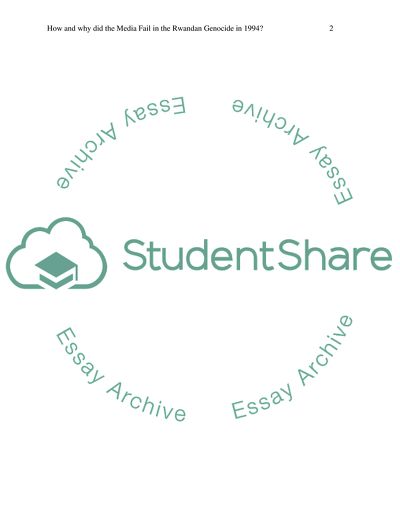Cite this document
(How Did the Media Fail in the Rwandan Genocide in 1994 Case Study Example | Topics and Well Written Essays - 2750 words, n.d.)
How Did the Media Fail in the Rwandan Genocide in 1994 Case Study Example | Topics and Well Written Essays - 2750 words. https://studentshare.org/media/1866809-how-and-why-did-the-media-fail-in-the-rwandan-genocide-in-1994
How Did the Media Fail in the Rwandan Genocide in 1994 Case Study Example | Topics and Well Written Essays - 2750 words. https://studentshare.org/media/1866809-how-and-why-did-the-media-fail-in-the-rwandan-genocide-in-1994
(How Did the Media Fail in the Rwandan Genocide in 1994 Case Study Example | Topics and Well Written Essays - 2750 Words)
How Did the Media Fail in the Rwandan Genocide in 1994 Case Study Example | Topics and Well Written Essays - 2750 Words. https://studentshare.org/media/1866809-how-and-why-did-the-media-fail-in-the-rwandan-genocide-in-1994.
How Did the Media Fail in the Rwandan Genocide in 1994 Case Study Example | Topics and Well Written Essays - 2750 Words. https://studentshare.org/media/1866809-how-and-why-did-the-media-fail-in-the-rwandan-genocide-in-1994.
“How Did the Media Fail in the Rwandan Genocide in 1994 Case Study Example | Topics and Well Written Essays - 2750 Words”. https://studentshare.org/media/1866809-how-and-why-did-the-media-fail-in-the-rwandan-genocide-in-1994.


